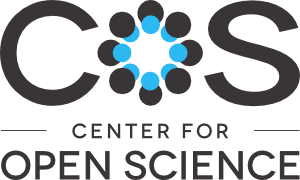Location
Our mission is to increase openness, integrity, and reproducibility of research.
These are core values of scholarship and practicing them is presumed to increase the efficiency of acquiring knowledge.
For COS to achieve our mission, we must drive change in the culture and incentives that drive researchers’ behavior, the infrastructure that supports their research, and the business models that dominate scholarly communication.
This culture change requires simultaneous movement by funders, institutions, researchers, and service providers across national and disciplinary boundaries. Despite this, the vision is achievable because openness, integrity, and reproducibility are shared values, the technological capacity is available, and alternative sustainable business models exist.
COS's philosophy and motivation is summarized in its strategic plan and in scholarly articles outlining a vision of scientific utopia for research communication and research practices.
Because of our generous funders and outstanding partners, we are able to produce entirely free and open-source products and services. Use the header above to explore the team, services, and communities that make COS possible and productive.
Members:
Resources
Displaying 301 - 305 of 447Transition to Sustainable Tropical Land Management
Following the example of Tiffen et al. on Machakos, Kenya, new macro-based evidence was collected in Machakos, the neighbouring Kitui district and in Benin, Cameroon and the Philippines, to assess the factors à la Boserup, inducing transitions towards sustainable land management, such as terracing, stone bands etc. We find that relative scarcity of land can be seen to induce technical changes, in the sense of Hayami & Ruttan, that correspond to the new relative scarcity, making higher man-land ratios the optimal choice.
Demand-Side Factors in Optimal Land Conservation Choice
The dominant paradigm of conservation-reserve planning in economics is to optimize the provision of physical conservation benefits (measured in units like species protected) given a budget constraint. Large-scale biology-based priority setting implies that the value we place on biodiversity and ecosystem function is not affected by human proximity to that natural capital. There is significant evidence, however, that human willingness to pay (WTP) for conservation declines with distance (e.g. Loomis 2000) – a phenomenon we refer to as “spatial value decay”.
The proximity of a field plot and land-use choice: implications for land consolidation
Traditional methods in agricultural economics and agricultural engineering have yielded mixed results when specifying the costs of an unfavourable parcel structure. Concepts related to travel costs and the production function are frequently applied when the costs of farming distant parcels are examined. However, farmers’ perspective regarding preferences for land use is ignored or partly overlapped by predictions made by researchers.
Optimal Contract Length for Voluntary Land Conservation Programs
In many parts of the world, deteriorating environmental conditions have led policy makers to develop policies and programs aimed at promoting conservation practices on lands devoted to agriculture. Such programs have been studied by environmental economists, but little research has been done on the usefulness of strategically varying the conservation contract's length.
A Land Market Cycle in the Netherlands
This paper develops a disequilibrium model of land prices in the Netherlands. It shows that the behaviour of traded quantities and prices of Dutch land have some resemblance with a disequilibrium land market model developed by Søgaard. An error correction model based on Søgaard’s model generates significant results with GDP and the real interest rate as explanatory variables, but regrettably farm income nor government demand for land generate significant results.


